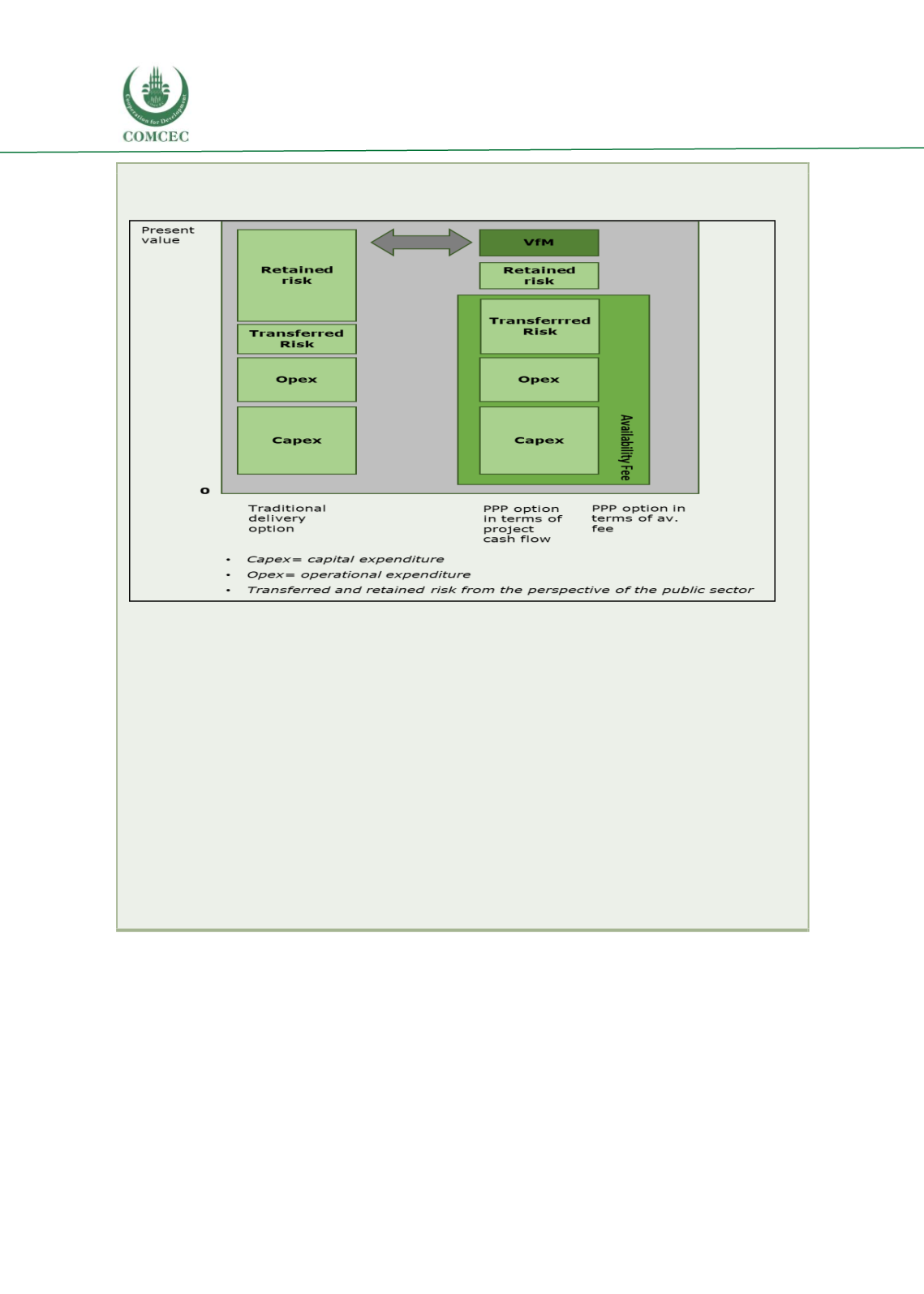

Risk Management in Transport PPP Projects
In the Islamic Countries
72
The following picture shows how conceptually the PPP option could be assessed vis-à-vis the
conventional delivery option.
Source: Authors based on EPEC (2015).
In practice
the evaluation is driven by a mix of quantitative and qualitative considerations
,
however the NPV approach leads to a disciplined vision of the likely differences between the
various components of the cost for the public sector and gives a strong incentive to assign a
monetary value to the risk retained or transferred. It is conceptually important that the PPP
option produces a positive difference in PV (the blue Value-for-Money section in the picture) and
that the PV of public sector fees paid to the private sector – the illustration above refers to an
availability fee-driven PPP – remains under the PV of the expected cash-flow.
In order to conduct
this type of analysis it is important to have a credible public sector comparator
, which
allows a systematic comparison between the likely cost of each PV component under the
traditional vs the selected PPP option. In principle these quantitative evaluations should be
supported by risk analysis modelling that produce statistical distributions of exposure under the
compared options.
Soft market testing
with potential private partners (investors, construction companies,
transport operators…) could be launched at this stage to refine the PPP project definition and
improve the assessment of barriers and opportunities to private sector involvement. It should
not be ruled out that, in countries with no/limited PPP experience and/or a maturing strategic
framework, pilot-based PPP investments could be worth considering and soft market testing
could be part of the pilot investment preparation. In sum, takeaways, barriers and parallel
strategy options related to the pre-tender phase can be summarized as presented in the
following Table.
















